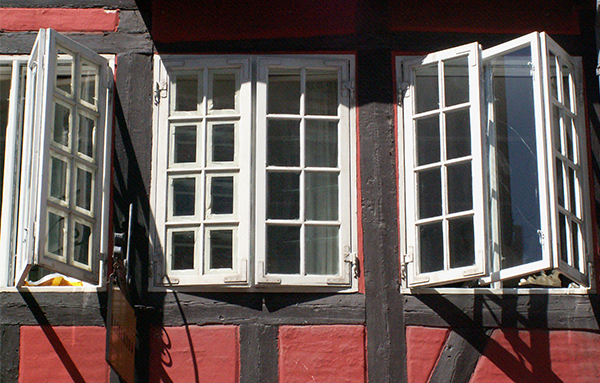Paarhammer will be closing at 12pm Tuesday the 23rd of December 2025 and we will reopen on Monday the 12th of January 2026. We would like to wish all our clients and suppliers a happy and safe holiday period.
Click here to view our latest blog
History of Windows

"The history of architecture is also the history of windows" said Le Corbusier, the Swiss-French pioneer of modern architecture. The modern window does not only consist of glass and frame, it is a complex structure which provides more than only views. Modern architecture is influenced by technological possibilities of window production, meaning that innovations in the window and façade technology open up opportunities for architects in the design of buildings.
While ancient China, Korea and Japan widely used paper windows, the Romans were the first known to use glass for windows around 100 AD. In England animal horn was used before glass took over in the early 17th century. Frames were made in timber and windows were small to suit the glass. In Georgian times windows with 6 glass panes per sash became common. Glass from that era often had air bubbles, distortions and curved ripples which can still be seen today, mostly in sash window styles in some historic buildings.
An early advance in automating glass manufacturing was patented in 1848 by the engineer Henry Bessemer. He also introduced an early form of "Float Glass" in 1843, which involved pouring glass onto liquid tin, which was improved on by the company Pilkington who also developed the revolutionary float glass process in the mid-20th century. This made modern-style floor-to-ceiling windows possible.
Before double glazed glass units were invented, often a set of separate window sashes were inserted into the frames in winter only (storm windows) to increase energy efficiency. These sashes were replaced in summer by shutters in Italy, Southern France, etc. or flyscreens in other parts of Europe.
The first patent for a sealed double glazed unit was lodged in the US in the 1930s. Following the serious European oil crisis in 1973, governments changed building regulations with some countries offering grants and cheap loans to improve building efficiency which included double glazed windows.
Today, double glazed windows and doors are common with triple glazing now also having been introduced to Australia. Frame materials for energy efficient windows and doors are timber, thermally broken aluminium, uPVC and timber-aluminium composites.
In Australia building regulations require certain energy stars for homes which is often reached – depending on climate of course - by using large windows on the north side for solar heat gain in winter with eaves to protect the glass during the hot summer months. Smaller windows are used for east, west and south facing elevations.
As an important part of a good window is also its air tightness to eliminate drafts, modern tilt and turn styles are becoming ever more popular. Technologically advanced tilt and turn windows and lift-slide doors originated in Germany, spread to the UK and are now also extensively used in the US and China amongst other countries. Paarhammer has made their first double glazed tilt and turn windows for the Australian market in 1990, with triple glazing options available since the local glass industry could manufacture the insulated glass units (IGU's). These triple glazed windows have the lowest U-value (and highestenergy efficiency) of any window made locally from mostly local materials right here in Australia.
What is in a name - the origin of ‘window’: Old Norse vindauga, from vindr ‘wind’ + auga ‘eye.’
A German language saying is that the windows are the ‘eyes of the house’.
‘The history of architecture is the history of the struggle for light'. Le Corbusier
Want to talk about your new windows and doors? Contact us